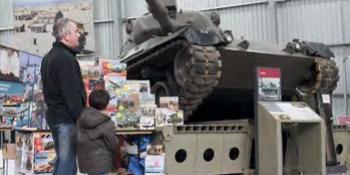The Otter’s ability to splash through rice paddies and travel over rough ground made it ideal for service in Vietnam bl@words John Teasdale pictures US National Archives
A vital role of the US Marine Corps was, and so remains today, amphibious landings. In the late 1940s, as part of a programme to replace wartime equipment, a new amphibious cargo carrier was designed and tested. In 1952, this was taken into service as the Carrier, Full-Track, Amphibious, M76. The vehicle was also known as the Otter.
Built by the Pontiac Motor Division of General Motors, the Otter was of modest size; crew comprised three men, and carrying capacity was seven men or 3,000lb (1,360 kg) of cargo.
The aluminium hull, with a boat-shaped nose, was fairly tall; loaded, height was 103.3in (2.62m). Ground clearance (with 3,000lb load) was 16.75in. Approach angle was 40.25° departure angle was 45.5°. Access to the crew compartment when the vehicle was on solid ground was via side doors; these were partly below water level when the vehicle was afloat, so were strongly made and waterproof. Access to the cargo compartment was via two doors at the rear; these were also, nominally at least, waterproof. However, in service, it was foun…




